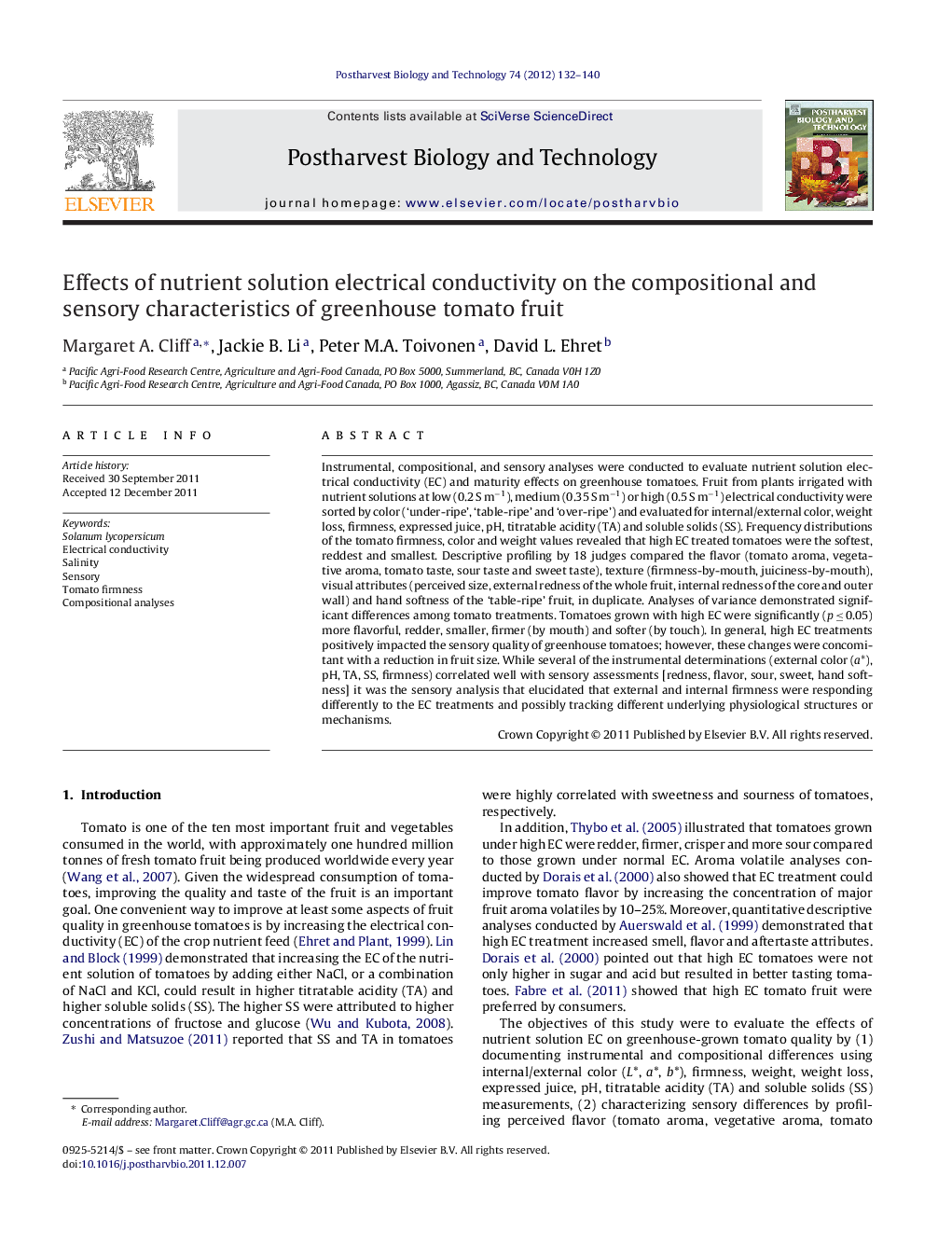| Article ID | Journal | Published Year | Pages | File Type |
|---|---|---|---|---|
| 4518587 | Postharvest Biology and Technology | 2012 | 9 Pages |
Instrumental, compositional, and sensory analyses were conducted to evaluate nutrient solution electrical conductivity (EC) and maturity effects on greenhouse tomatoes. Fruit from plants irrigated with nutrient solutions at low (0.2 S m−1), medium (0.35 S m−1) or high (0.5 S m−1) electrical conductivity were sorted by color (‘under-ripe’, ‘table-ripe’ and ‘over-ripe’) and evaluated for internal/external color, weight loss, firmness, expressed juice, pH, titratable acidity (TA) and soluble solids (SS). Frequency distributions of the tomato firmness, color and weight values revealed that high EC treated tomatoes were the softest, reddest and smallest. Descriptive profiling by 18 judges compared the flavor (tomato aroma, vegetative aroma, tomato taste, sour taste and sweet taste), texture (firmness-by-mouth, juiciness-by-mouth), visual attributes (perceived size, external redness of the whole fruit, internal redness of the core and outer wall) and hand softness of the ‘table-ripe’ fruit, in duplicate. Analyses of variance demonstrated significant differences among tomato treatments. Tomatoes grown with high EC were significantly (p ≤ 0.05) more flavorful, redder, smaller, firmer (by mouth) and softer (by touch). In general, high EC treatments positively impacted the sensory quality of greenhouse tomatoes; however, these changes were concomitant with a reduction in fruit size. While several of the instrumental determinations (external color (a*), pH, TA, SS, firmness) correlated well with sensory assessments [redness, flavor, sour, sweet, hand softness] it was the sensory analysis that elucidated that external and internal firmness were responding differently to the EC treatments and possibly tracking different underlying physiological structures or mechanisms.
► Analytical/sensory determinations successfully tracked changes in EC treatments. ► External/internal firmness tracked different physiological characteristics. ► Elevated EC levels enhanced the color, flavor and internal firmness of tomatoes. ► Enhancement of tomato quality was concomitant with a reduction in fruit size. ► Instrumental firmness measurements (Sinclair, digital) correlated only slightly.
